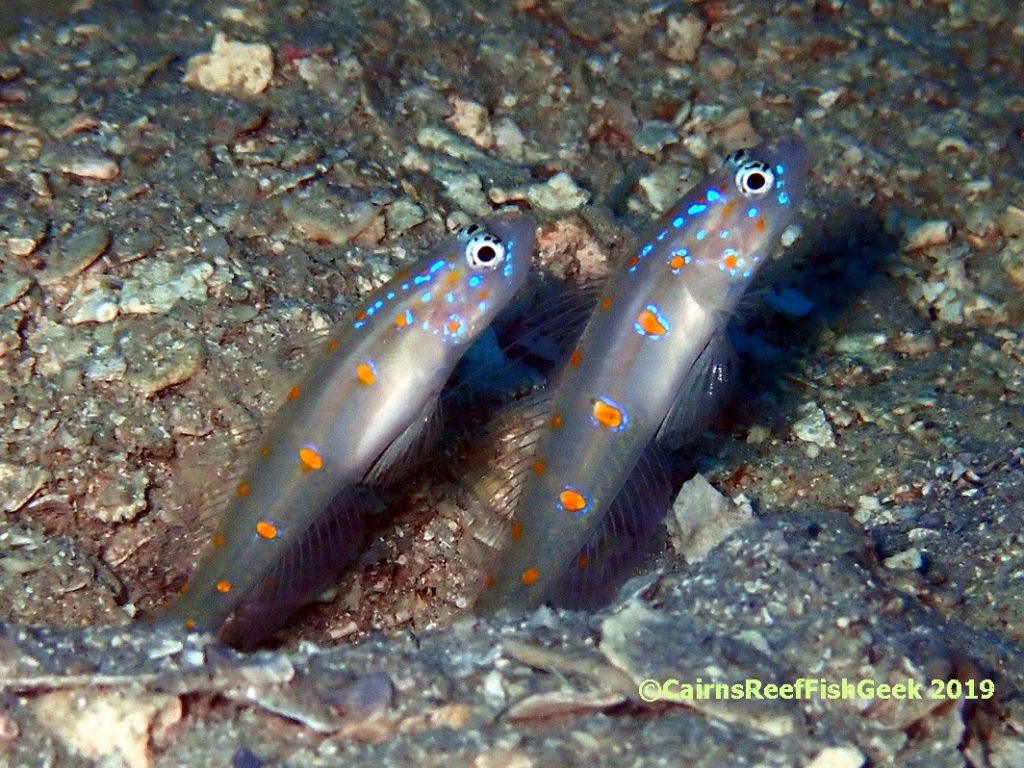Alex has a predilection for fish identification and likes to scout out the rarer species. This gives other dive club members ample opportunity to rib him mercilessly. Early on our Papua New Guinea dive trip, Akiko told him about a rare goby she saw on a night dive that he’d uncharacteristically missed. A look of disbelief crossed his face.
“Really,” he said, “And what was this goby doing.”
“It was just hopping along on the sand, near its burrow.”
“Sorry Akiko, Gobies sleep at night!” retorted Alex, his disbelief justified.
“No, no, this one was dancing. It’s a disco goby and it comes out at night.” Akiko replied, almost a step ahead of him.
“No use trying to patch it up now, Akiko, Gobies only come out in the day,” said Alex, determined to have the last word.
“No this is a special one, it’s Alex’s disco goby!” said Akiko.
The ghost of Alex’s disco goby haunts conversations over the next few days. Then in the not-so-good weather on our last day, when the boat is sheltered behind Nuakata Island, we discover that a rare shrimp goby is found in this bay. Alex, of course, is determined to see it. He’s first out on dive deck in the morning. Any buddy will do, but it’s 6 am and no-one else is close to ready, so he drops down into the water alone beside the MV Chertan. And, needless to say, he finds it. By midday, he’s taken some fantastic goby photos.

Shrimp gobies are usually found in pairs which live in burrows that their accompanying shrimps kept clean of rubble. His photo shows the pair, hovering over the sand, their long bodies partly inside their burrow. They are pretty with a row of bright orange dots along their pale streamlined sides, and iridescent blue markings on their faces. Alex tells Morris, the chef, not to wait for him to serve lunch. He’s persuaded Aran into bringing his huge camera with multiple attachments back down under for another photoshoot of the rare Nanna Shrimp Gobies.
Alex is not the only one taking advantage of this location. Yesterday three of us took a walk past a couple of villages on Nuakata Island, and today our boat has a few reciprocal visitors. A local girl paddles over, and lets Helen use her outrigger canoe for a jaunt around the bay. Helen has done this before and manoeuvres the craft adeptly, a huge grin on her face. She returns with stories of how the locals know this island as Octopus Island because it has 8 points, and how the young girl walks for an hour and a half along the bay and over a mountain to school and then later returns the same way. When I tell a PNG crew member about this and ask if Nuakata means octopus, he giggles and says that someone must have seen a map of the island and made up a story about it being called Octopus Island.